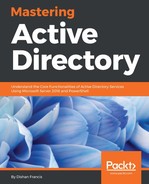In mobile phones, we have phone books. If we need to save someone's phone number, how we do that? Do we just enter the number and save it? No, we attach the number to a person name or something we can remember. So, the next time we open the contact list, we can easily find it. In Boaz Yakin's film Safe, there was a little Chinese girl who could remember long numeric codes. But if I had such a memory, I have a lot of other things I would like to remember rather than a bunch of numbers. It is the same with when you are dealing with IP addresses. I remember a few of the most commonly used IP addresses in infrastructure. But I do not remember most others. I remember lots of servers by their hostnames rather than IP addresses. This is because hostnames are more user friendly and easy to remember than IP addresses. This is what exactly DNS does. It maps IP addresses to domain names or common terms that are user friendly.
As I stated, there will be no functioning AD domain infrastructure without DNS. There are two main reasons why AD DS needs DNS:
- Maintaining hierarchical infrastructure design: In the previous chapters, I talked about designing the AD infrastructure. I mentioned implementing multiple forests, domains, and child domains. We use domain namespaces to separate them with each other and build the AD hierarchy. The only way you can reflect that logical structure infrastructure is using DNS.
- To locate domain controllers: Devices in infrastructure need to communicate with AD domain controllers for authentication. If it's a remote site, it needs to locate its closet domain controller for authentication. This process is done using DNS service (SRV) records. Also, if an application or service needs to locate a host or resources, DNS will help resolve that.
Before DNS, systems were using LMHOSTS and host files to map IP addresses to friendly names. This is still done in small networks. The LMHOSTS file helps find NetBIOS names in TCP/IP networks. The host file helps find domain names in TCP/IP networks. This is also used to override the DNS entries because in name resolution, the host file still gets priority.
The LMHOSTS and host file will be located at C:WindowsSystem32driversetc:

DNS maintains a database that contains various DNS data types (A, MX, SRV, AAAA). This database can be distributed among multiple servers. This also provides control over the DNS infrastructure and enables administrators to add/edit/delete DNS entries. DNS allows you to delegate administration over the DNS domain. It also allows you to share a read-only copy of the database, where we cannot guarantee the infrastructure security.
